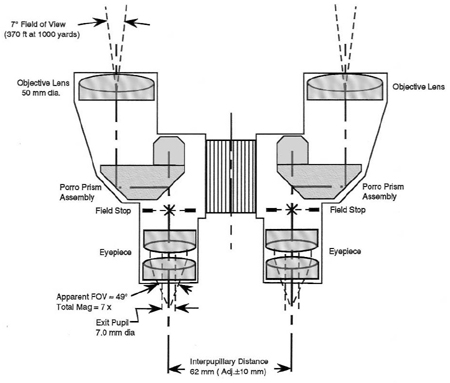Optipedia • SPIE Press books opened for your reference.
Binoculars
Excerpt from Optical Engineering Fundamentals, Second Edition
A pair of binoculars is made up of two identical terrestrial telescopes, linked together such that their optical axes are parallel. The distance between the two exit pupils is made to be adjustable to accommodate individual differences in eye separation (interpupillary distance, or IPD). The average value for IPD is about 64 mm, with an adjustment range of +/-10 mm adequate to satisfy most requirements. It is critical that the two optical axes be parallel as they enter the viewer's eyes. A maximum misalignment tolerance of one arcminute will be accommodated by most users with little difficulty. The dual optical paths will result in more natural, relaxed viewing, with an enhanced stereo effect relative to that provided by a single telescope, i.e., a monocular. In general, the improvements in viewing provided by using binoculars versus a monocular of similar specifications and optical quality will be cosmetic in nature and, in many cases, will not justify the additional size, weight, cost, and complexity that would be involved. The optical layout of a typical pair of 7 × 50 Porro prism binoculars is shown in Fig. 8.13. Many recent binocular designs incorporate in-line erecting prisms which lead to a more compact, lightweight final design.
B. Walker, Optical Engineering Fundamentals, Second Edition, SPIE Press, Bellingham, WA (2008).
View SPIE terms of use.


